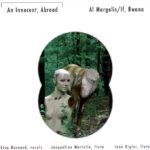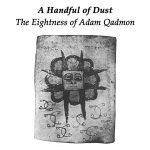Moli Herzog
19,00 € VAT included
Only 1 left in stock
“There are so few complaints that can be made about this release that it is almost laughable. Larger print and better penmanship would have made the information easier to read for burnouts, who just might be a large part of the audience. Discographers and “count the musicians” types would also prefer to have the full names of the players, especially when they are so good. It is understood that Niko Uske is the maestro here, as his name is presented in its full glory in several places. That’s appropriate, as this is the Uske Orchestra, he did all the composing, plays more than a dozen instruments, and came up with artwork inspired by the “Ukiyo” school. Graphic art and packaging do indeed seem to be an area of interest to this multi-talented orchestra chef. This is one of the most beautiful and unique CD packages that has been thrust into this reviewer’s hands in many a fortnight. It even includes two postcards and a bookmark. Yet this is not a case where the graphics outdo the music, not at all. This is also one of the most inspired recordings of large-group music involving factors such as avant-garde jazz, ethnic music, and electronics in years. The recording quality is lovely and the trip becomes particularly enchanting because even on repeated listening it is not ever predictable where the performance is headed. It is hard to think of a more balanced presentation of composed music and tough improvising, but the stylistic changes that happen never seem wrenching.
The presence of traditions such as Balinese gamelan bring to mind some of the ’70s performances of Don Cherry — classic as these are, the Uske Orchestra recording is much better organized and coherent. It also goes places artists such as Cherry never went. Highlights are many, but for example the writing and combination of instruments on “Lavamatic” — or is that “Lavamstic”? — have a profound silliness to them. Humour also pervades the fast-moving “Japanese Merengue,” in which cut-up tapes, a cartwheeling trumpet, and a reed section right out of Spike Jones flee from the speakers as if a tidal wave were about to wash over the room. The composer and bandleader gives detailed credit about how improvisations by various groups of players affected the creation of the tracks. The notes also explain how the music is the outgrowth of recording sessions for a soundtrack to a film by Vincent Pinckears detailing a visit to a Mongol family. All of which helps emphasize the fact that Uske did not conceive and carry out this brilliant recording totally alone, as well as perhaps providing a context of sort for listeners who find the music by itself challenging. Upon an initial listen, prior to learning about the Mongolian connection, many totally unrelated visual images presented themselves as a result of the richly textured music. Use of the Fender Rhodes piano, for example, might bring to mind the eloquence of vintage Herbie Hancock rather than the view from the Trans-Siberian railway. The Uske Orchestra has brought together all such elements, from the intimate to the vast, from the melodic to the chaotic. Leave the CD playing after it appears to be over and a somewhat rambling but highly entertaining bonus track will play.”













